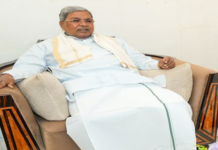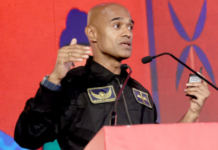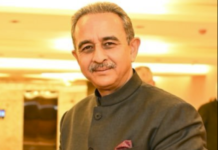New Delhi– As India marks the 50th anniversary of the Emergency imposed by then-Prime Minister Indira Gandhi on June 25, 1975, it also serves as a moment of reflection—honoring those who resisted the suspension of civil liberties and the suppression of democratic rights during one of the darkest periods in the nation’s history.
Among the many who stood up against this authoritarian imposition was a young Narendra Modi, whose early political activism and underground work during the 21-month Emergency have been chronicled by Modi Story, a popular account on X (formerly Twitter) dedicated to documenting his life journey.
The platform recently shared a series of accounts highlighting Modi’s efforts as a ground-level activist who took on multiple roles to protect democratic values, mobilize students, and resist state repression. These stories include firsthand testimonials from individuals who worked alongside him during that turbulent time.
Vijay Rajpal, who first met Modi in 1973 at the Rashtriya Swayamsevak Sangh (RSS) office in Ahmedabad, recalled how Modi once took shelter in his home. It was there, Rajpal said, that Modi learned to tie a turban in order to disguise himself and evade arrest by Gujarat police.
“Modi was under close watch for his role in the anti-Emergency movement. We went to Chandni Chowk, where he bought a turban and returned to Gujarat posing as a Sikh to avoid detection,” Rajpal said.
Prakash Mehta, an NRI now living in Australia, recounted their days of underground resistance under the banner of the Navnirman Movement.
“The police weren’t allowed on campus, so we used that space to operate underground. Modi inspired students to stand up and resist. He organized secret meetings in hostels and encouraged graffiti campaigns to spread the message. To do it quickly and avoid capture, he suggested using steel stencils to spray ‘Emergency Hatao’ in under two minutes,” Mehta recalled.
Daxesh Mehta, a former municipal councilor in Gujarat, remembered how crucial documents were often smuggled out of the RSS office in Ahmedabad, which was under constant surveillance.
“To avoid raising suspicion, Modi would send young boys to transport these materials rather than older men. It seemed like a minor decision, but it reflected his strategic thinking and ability to work under pressure,” he said in a video message.
Swami Govind Dev Giri Maharaj, a spiritual leader associated with the Shri Ram Janmabhoomi Teerth Kshetra Trust, revealed that during the Emergency, Modi spent weeks in solitude, meditating at the Garudeshwar Mandir—an act of quiet defiance and spiritual resilience.
Another anecdote sheds light on Modi’s personal efforts to care for imprisoned activists and their families. Nirmal Motwani, a resident of Surat, recalled: “One of Modi’s responsibilities was supporting the families of jailed karyakartas. Once, the wife of a detained activist asked him to deliver home-cooked food to her husband in jail. Despite the constant risk of arrest, Modi took the food and delivered it himself.”
As India reflects on the Emergency’s legacy, these stories of young Narendra Modi’s courage, resourcefulness, and dedication to democratic principles offer a window into the early life of a leader who would go on to become Prime Minister. (Source: IANS)













